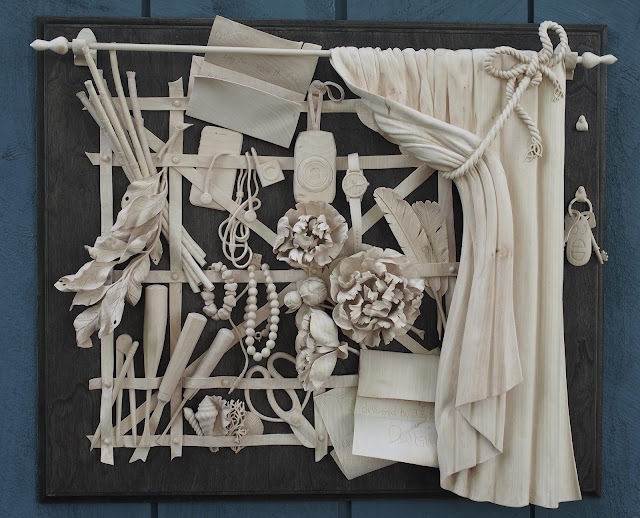Illusionistic carving like Gibbons's may be "the art that arrives even to deception", but I suggest on pp. 124-7 that the pale monotone of lime preserves this kind of carving from too literal a resemblance. It allows us to concentrate on the formal qualities of the carved object without worrying about whether it's actually real. These gardening tools would have been spoiled, in my opinion, if I'd painted them:
On pp. 130-33 I write about how the idea that wood should be brown is ingrained in our consciousness, and how when I first saw it I didn't think it odd that the altar carving at St. James's Church Piccadilly it was darkly varnished. Here is how it looked back then:
You can scroll back to the images for Chapter II to remind yourself of how it looks now, after conservation and lightening.
P. 136. Here is my copy next to the original the little 17th century ornament. I thought I'd managed to deceive the owner, but he now seems cannier than I thought. I now recall that one reason for the crusty look of my cuts is that I was using jelutong, a balsa-like tropical wood, rather than the original's limewood. I can't remember why. Mine is on the right:
I've just found an old photograph of the very early carving I did that incorporated a broken stem, fooling at least one observer (pp. 136-7):
pp. 137-40. Here are some examples of the American hardwoods carving experiment that sent me racing back to limewood.
On p. 147 I mention that at Hampton Court we found a carving with a back covered with gouge stab marks. You can see a picture on p. 198 of my book Grinling Gibbons and the Art of Carving.
Here is a detail of the endpiece illustration of Chapter IV, a musical trophy that includes among other things a copy of Benny Goodman's clarinet (Goodman was a friend of my patron):
To see images for the remaining chapters, click "Older Posts" below. Or you can use the "Blog Archive" here to jump to individual chapters.





















































